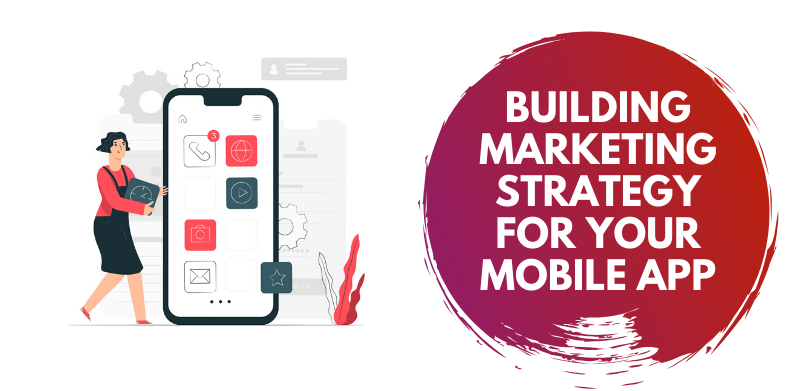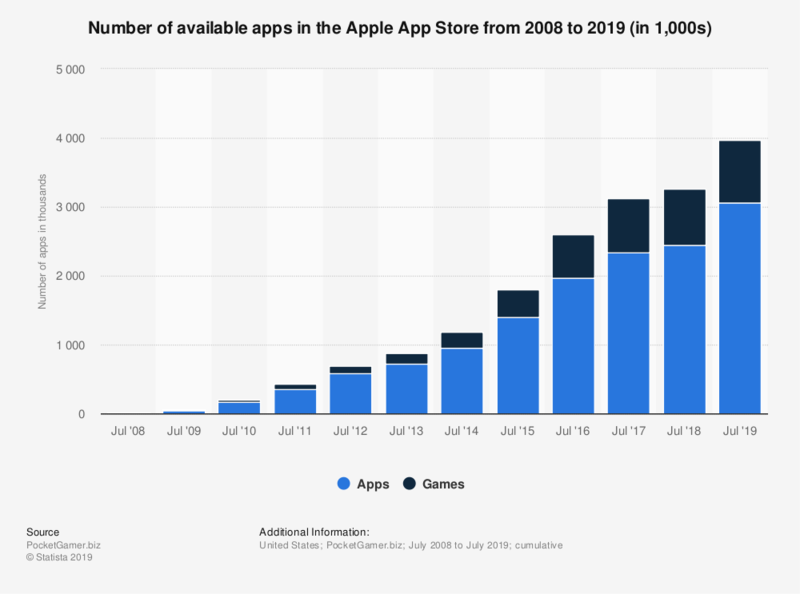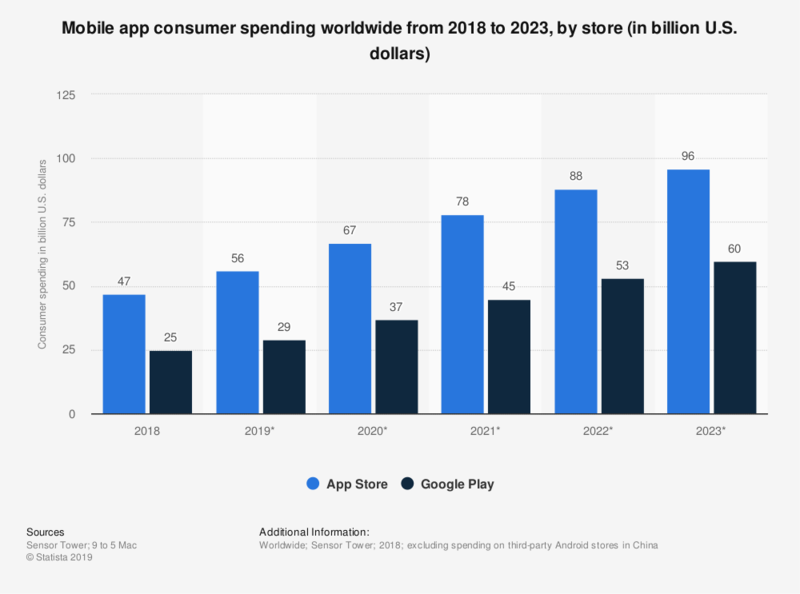By the end of 2019, a number of registered smartphone users in the world comprised 3.2 bln people. Last year, customers spent an estimated $54.2 billion on in-app purchases, subscriptions, and premium apps in the Apple App Store. That is the reason why the mobile application market attracts more and more companies and start-ups. But before building a mobile application, it’s important to determine a marketing strategy that will help you not only to achieve Return on Investment (ROI) but also get a profit. Let’s consider the key stages of the app marketing strategy to reach the maximum project implementation efficiency.

Key Moments for Strong Marketing Strategy
Self-presentation
One of the essential elements of defining the product’s competitive advantage is the establishment of its value for a user. Following trends and avoiding the template-based approach, you significantly increase your chances of being noticed by potential clients.
86% of users tend to prefer solutions that aren’t overloaded with confusing information and are utterly accessible. Focus on the main thing - how the app will change the users’ lives in a positive way and solve their issues.
Audience
Focusing on the target audience, you can distribute the budget more efficiently, without putting effort into attracting people that aren’t interested in your offer. Getting to know your clients is a crucial element in creating an efficient marketing strategy.
Additionally, you should also go through the important aspects related directly to mobile app development, such as:
- positioning & self-presentation of a company in the market;
- experience in similar projects;
- quality of product support & maintenance.
By juxtaposing all that information, you get a working way to define the major types of your potential users and settle with the most fitting company for the successful project implementation.
Competitive environment
Learn the strengths and weaknesses of your competitors to promote your mobile app more efficiently. It will reduce the chances of making common implementation mistakes and improve your marketing efficiency.
Budget
In 2019, the App Store offered almost 4 mln apps and it grows year in and year out. You need a certain marketing budget to make your app visible for clients. The competitors’ experience analysis can let you determine the budget size and points of its distribution. You will need to use various promotional tools, both free and paid.

Result analysis
Systematic summarizing is a reasonable way of defining the performance of your marketing strategy. App KPI can help you to analyze the particular points, such as:
- a number of app downloads;
- CPI - cost per app installation;
- DAU & MAU - daily & monthly active users;
- Daily sessions - how many times users visit your app during a day;
- Retention Rate - a number of users who return to the app after the first visit;
- Churn Ratio - a number of users who abandoned the app.
Read also: Best Mobile App Analytics Tools
Promotion Tools
The main task of any company isn’t limited by simply creating an application. It’s crucial to introduce it to the market properly. The top points of any successful marketing strategy include the leading position in search engines, a considerable number of downloads and purchases, as well as excellent product awareness. For such purposes, you can employ the following methods.
App optimization
App Store Optimization (ASO) is improving mobile app visibility in the app stores. It helps to boost the app’s search engine position, making it more noticeable for users.
Headline
It should be readable and simple to perceive. Here are a few tips:
make it simple and easy to remember - use up to 50 symbols for Google Play and 23 symbols in Apple Store;
make it unique and not similar to any existing headers;
include the main features of your app.
Icon
This element should translate the essence of the app. The typical word limit for icons is 12 symbols. An image should attract the user’s attention, so try to:
- use one-shaded backgrounds;
- use simple forms;
- focus on one main object.
Description
Don’t sell the app, sell the opportunity to improve users’ lives. Make your app description using the following information:
- benefits and competitive advantages;
- basic features and updates;
- achievements or awards.
Keywords
Here are some recommendations for Apple App Store:
- don’t use the word “app” and category titles;
- avoid repeats;
- exclude competitor-used words and logos;
- divide words with commas.
Popularization
The modern world of business simply cannot make it without advertising. A good part of your project budget should be dedicated to the popularization of your product among the users. The most efficient Ad type for mobile applications is Apple Search Ads and App Campaigns on Google Play. It’s quite an easy way to help people discover your app at the top of search results on App Store and Google Play Market. Additionally, you can use Ad instruments of Google Search, Youtube, Facebook or other social networks.
Video
Visuals are the best way to affect users’ minds. Video helps people understand app functionality and benefits before installing. It should be brief yet descriptive, highlighting the best sides of your solution and calling to action.
Promo Website
The landing page can help you to promote the application using not only specialized App Campaigns on Google Play or App Store but all types of digital ads (email marketing, video ads, Search Engine Marketing, social media and display ads). Just make sure to focus on:
- functionality and smooth performance of your application;
- real user feedback;
- app download banners;
- Call to Action buttons.
Special offers
You can get a significant additional boost by providing:
- giveaways - people love taking part in contests;
- referral links - offer bonuses for sharing referral links;
- community leading - people connected by the same idea make a huge force.
Choosing a Platform
Android and iOS are the current leading platforms on the market. They cover 94% of all downloaded applications globally. Let’s take a look at the pros and cons of each platform.
- To enter the App Store market, a mobile app has to go through a strict, time-consuming Apple policy verification process, while to get to Google Play market is quite simple.
- iOS users spend more money on purchasing apps for their smartphones and tablets. They value user experience and use once downloaded solutions more frequently.

- Android’s worldwide market share is 74,3% against 24,76% of iOS.
- According to Statista, the most popular App Store categories 2019 are Games, Business, Education, Lifestyle, Utilities. When it comes to Android, the TOP5 list is Games, Tools, Entertainment, Social, Communication.
Read also: How to Develop an MVP App?
You need to understand the main points of your product, the positioning, and the audience. If it’s intended for a mass audience and average to low consumer class - Android is your best bet. If you target a business niche users with a higher-than-average income - iOS is in higher priority.
Summary
A marketing strategy during the implementation of a mobile app allows you to fully understand the crucial features of your future product as well as clarify all the related promotional moments. Without such information, you may undermine the long-run success of your project. Stay sharp and turn to real experts to avoid risking your time and money while your solution mixes up with a bunch of similar ones. Our development aces can recommend the optimal platform for your particular project and offer advanced, extraordinary solutions to stimulate your business and provide a high quality of development.







